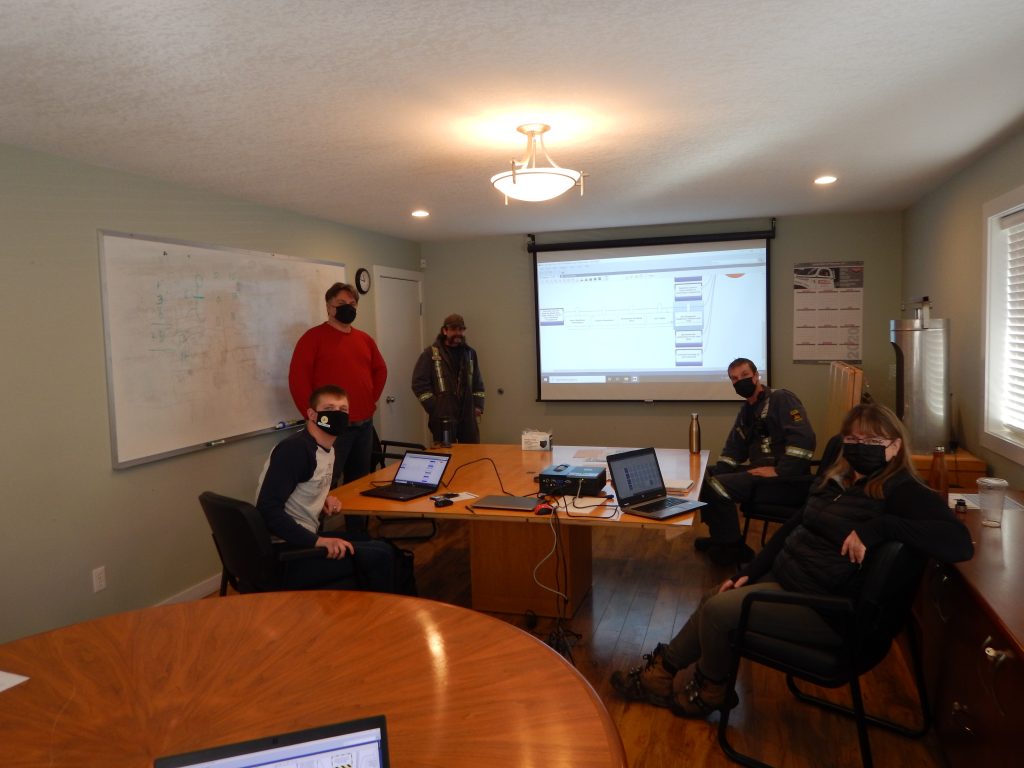
Industry embracing critical control management: workshops completed at 10 sites
August 11, 2021
By Gordon Murray, Executive Director, WPAC
 Pellet plants across B.C. are embracing critical control management, with 10 of the 15 sites already completed in this important initiative. Photo courtesy BC Forest Safety Council.
Pellet plants across B.C. are embracing critical control management, with 10 of the 15 sites already completed in this important initiative. Photo courtesy BC Forest Safety Council. In 2020, the Wood Pellet Association of Canada (WPAC) and the BC Forest Safety Council (BCFSC) teamed up to introduce and implement the Critical Control Management (CCM) process across WPAC’s B.C. member plants. The uptake and learnings are providing key insight into how the industry can benefit from bow tie analysis, which forms the foundation of CCM. To date, workshops, led by researchers at Dalhousie University and BCFSC staff, have been completed at 10 of the 15 sites.
The pellet industry has a record of embracing new systems, processes and technologies to make plants safer and the CCM workshops are no exception. Plant employees participate in bow tie analysis workshops, led by Kayleigh Rayner Brown, P.Eng., M.A.Sc. Participants receive education, training and mentoring in the necessary knowledge and skills required to identify site-specific critical controls. BCFSC safety advisors Bill Laturnus and Tyler Bartels summarize the information developed at the workshops into a workable template for the plant to use when it submits its plan to WorkSafeBC.
“There’s a natural journey happening at these workshops,” says Laturnus. “By working together, plant staff are open and honest about the potential hazards and collectively they develop processes that improve safety. As the days go by, they begin to get excited at the prospect of applying this approach at a larger scale not just combustible dust but chemicals for example or preventing back injuries, you name it, bow ties and CCM have very broad applications.”
Successful workshops mean getting the right people at the table every day of the workshop – no small feat in a plant and managing holiday schedules on top of it.
“The level of commitment and work that went into getting the right people to the workshop while ensuring back up at the plant was excellent and it paid off,” says Rayner Brown. “As a result, we had strong energy and an eagerness to, analyze, discuss and learn, which resulted in people identifying tangible and practical changes that could be easily implemented.”
West Fraser’s WestPine MDF plant in Quesnel is the most recent operation to participate, alongside Canfor and Premium Pellets which have also completed their workshops. Greg Rye, WestPine’s safety resource co-ordinator, says the workshop helped the team discover opportunities for further protective barriers and illustrated and validated the controls they need to have in place.
“What stood out for me was how comprehensive the process, especially working with an expert like Kayleigh,” says Rye. “Next steps for us will be to identify those controls deemed to be ‘critical’ and to begin to document our critical controls management plan.”
Rye also has advice for the plants participating in upcoming workshops.
“Bring a diverse group of people together and really engage in the process. Also take time to look at the bow tie webinars which were a great primer on the process and we recommend everyone complete them in advance.”
WorkSafeBC is funding the Dalhousie University Department of Process Engineering and Applied Science Innovation at Work research project that will build on the WPAC funded CCM project workshops and transfer this knowledge to employees and employers throughout the wood pellet industry across Canada and internationally.
You can read more about CCM on WPAC’s website.
Tips for a successful bow tie workshop
- Complete Webinar #1 and #2 in the WPAC Safety Foundation Webinar series for a primer about bow tie analysis and critical controls management
- Collect useful documents before the workshop so the team can use them to refer to things like piping and instrumentation diagrams (P&IDs) and corporate risk management programs
- Develop a terms of reference ahead of the workshop, get buy-in from all participants so commitments and objectives are clear
- Identify key personnel in your organization that should participate in the workshop and begin planning and scheduling early!
- Your team should consist of subject matter experts (SMEs) knowledgeable in the operations and maintenance of the facility and its controls ideally, including:
- Operations (manage, supervisor, operators)
- Maintenance staff
- Electrical staff
- Safety (EHS, OHS and process engineering)
- Process control and instrumentation
- Engage a facilitator with experience and knowledge in bow tie analysis to lead the workshop
- Schedule five-minute breaks every hour (hard-stops) during the workshops
- Invest in solid/good quality audio-visual equipment
- Be adaptable and nimble to make the most of the discussions, learnings throughout the process and the expertise in the room
Print this page